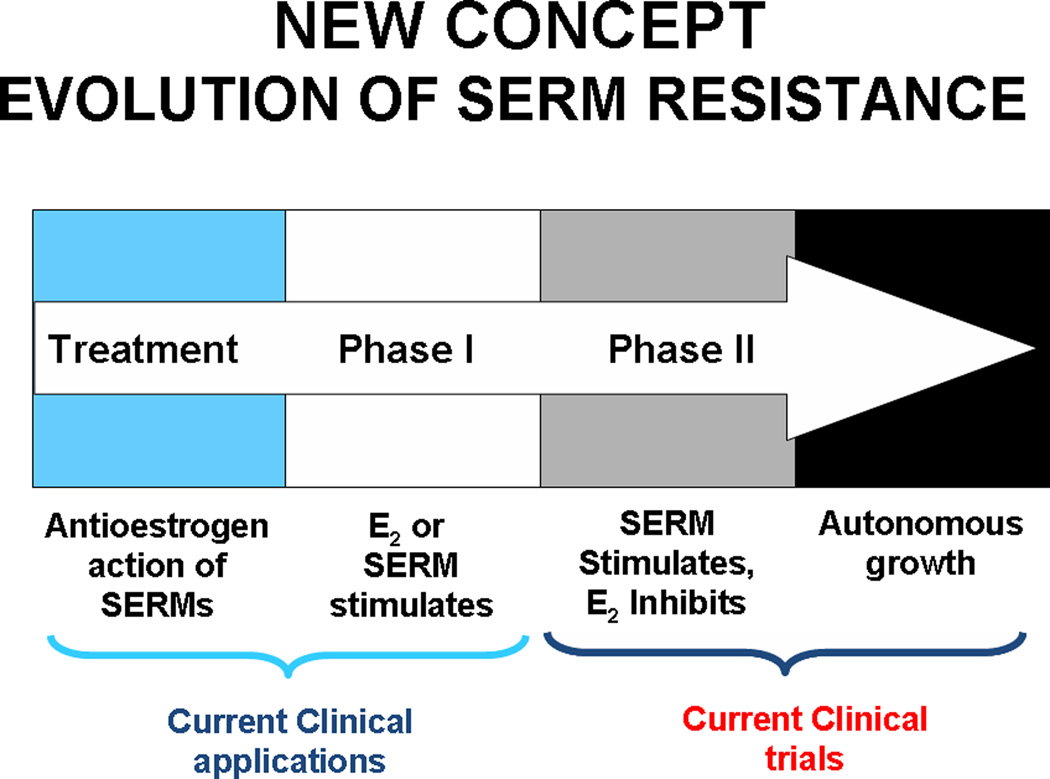Figure 4.
Evolution of acquired SERM resistance. After long-term treatment with SERMs (1–2 years in vivo), initially responsive ER-positive tumors become resistant to treatment and are stimulated by SERMs (Phase I resistance) as well as by E2. After long-term transplantation into SERM-treated animal (5+years), breast tumor growth is inhibited by E2, though still stimulated by SERMs (Phase II of resistance). This process with SERMs in vivo is replicated with estrogen deprivation with MCF-7 breast cancer cells in vitro; cells initially start to grow spontaneously but estrogen still induces growth (hypersensitivity). This is Phase I. Long-term estrogen deprivation causes spontaneous growth in culture but apoptosis with physiologic estrogens both in vitro and in vivo (Phase II) (Jordan VC 2004 Cancer Cell 5:207–213 reproduced with permission ).

